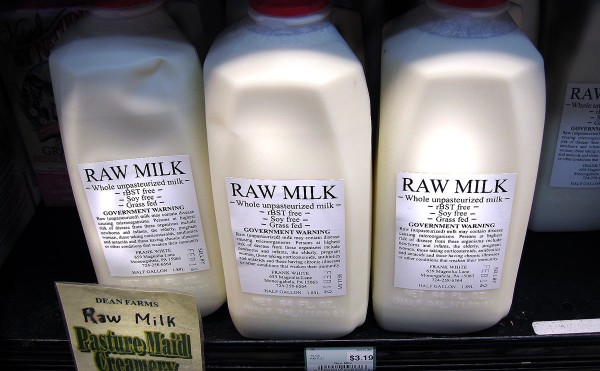
Advertisement
U.S. Federal Regulation (21 CFR § 1240.61) declares: “No person shall cause to be delivered into interstate commerce or shall sell, otherwise distribute, or hold for sale or other distribution after shipment in interstate commerce any milk or milk product in final package form for direct human consumption unless the product has been pasteurized.”
Notwithstanding this federal regulation, states may choose to adopt their own laws on raw milk sales. Arkansas, for instance, was able to pass Act 1209 back in 2013, a bill which allows for the incidental sale of locally-produced raw milk directly from the farm, as long as farmers post signs indicating that their milk products are not pasteurized or regulated by the state. Raw milk sales at farmers markets and retail stores, however, remain prohibited.
Previously, Arkansans wanting raw cow’s milk had to either bootleg their milk from nearby states with fewer authoritarian restrictions, or find a local farmer willing to give it to them without payment. Raw goat’s milk, on the other hand, had previously been legal for on-farm sales only, with the caveat that only 100 gallons of it be sold a month. Act 1209 increased this limit to 500 gallons.
At present, according to the National Conference of State Legislatures, 31 states allow for consumers to purchase raw milk directly. In many states, such as Arkansas, raw milk can be only purchased at the farm, at farmers’ markets or through a “cow-share” program, where consumers combine resources to purchase a dairy cow. 12 states, however, only allow consumers to purchase raw milk at retail stores. In the remaining 19 states, the sale of raw milk to consumers remains prohibited.
While the raw milk debate among Americans remain unresolved and our laws remain fragmented, our European counterparts are now embracing the benefits of raw milk consumption. In fact, several European countries have already installed raw milk vending machines in strategic locations to provide citizens 24-hour access to raw milk. Despite the existence of research showing the positive health benefits of raw milk, however, the U.S. Food and Drug Administration (FDA) remains unrelenting.
Until when will we be deprived of our freedom to choose what we eat and how we eat it? The definitive answer to this question, unfortunately, remains elusive.
To have an overview of the different state regulations on raw milk, take a look at Farm-to-Consumer‘s interactive map of raw milk laws.
Sources used:
Submit a correction >>
This article may contain statements that reflect the opinion of the author
Advertisement
Advertisements















